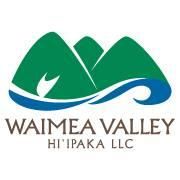Waimea Valley finally in the black and expanding after years of financial struggle

Waimea Valley finally in the black and expanding after years of financial struggle
As featured in Honolulu Star Advertiser By Allison Schaefers

Waimea Valley will soon close on a 3.75-acre land purchase that will allow the attraction to undertake its first real expansion since emerging from more than a decade of major financial struggles.
The parcel, which is adjacent to the entrance of Waimea Valley’s visitor center, will provide an opportunity for the attraction to build an open-air hale where it could expand its cultural offerings. Waimea Valley’s Native Hawaiian cultural roots go back to at least the 11th century, when it first became known as a “sacred valley of the priests.”
In recent years the property, which is owned and managed by the nonprofit Hi‘ipaka LLC, a subentity to the Office of Hawaiian Affairs, has been focused on increasing its cultural programming. Visitors have had greater opportunities to interact with artisans to learn about everything from lei making to how to play musical instruments like the nose flute, dance the hula, try out Hawaiian massage and see how warriors made their shark’s tooth weapons. It’s also upped its participation in animal and plant research projects with the goal of raising the valley’s footprint as a “world-class botanical garden, cultural site and center of learning,” said Richard Pezzulo, Hi‘ipaka’s executive director.
“We want visitors to know that this is a special place,” said Pezzulo, who was OHA’s chief finance officer and chief operating officer before taking over leadership of Waimea Valley in 2012. “We want them to know that it’s not just a business venture. We want to preserve and protect it for many generations to enjoy.”
For many years that dream seemed beyond reach.

The attraction took a downward turn after Christian Wolffer, a New York investor and theme park developer, purchased the valley in 1996 with plans to turn it into an adventure park. By 2001 it was put under bankruptcy protection amid slipping attendance. Wolffer floated a plan to add luxury housing to the site.
“The North Shore community came together and marched on City Hall to protest the housing development,” Pezzulo said.
Instead, the city, the state Department of Land and Natural Resources, the Army, the National Audubon Society and OHA formed a partnership to acquire the land and pass the title to OHA.
The National Audubon Society took over management for a time. When it turned over the property to OHA in late 2007, Waimea Valley was losing over $1 million a year, had reached an all-time low for visitor attendance and had accumulated an $11 million maintenance backlog. In 2008 OHA transferred the land to its nonprofit Hi‘ipaka LLC, which has since invested more than $10 million to put the money-losing site on the path to recovery.
“I got here in 2012. The tourism boom had started well before that, so we should have been riding the increase, but there wasn’t enough focus on the visitor experience,” Pezzulo said.
Road to profitability
Under Pezzulo the visitor center and Proud Peacock restaurant were renovated and made accessible to disabled visitors. Pavilion flooring was upgraded, and portable toilets were replaced with permanent restrooms.
“The site was in the red for four years. You have to give OHA a lot of credit for supporting it until it could be made profitable,” he said.
By 2012 the valley was in the black, where it has stayed. Attendance climbed to an average of 950 people a day in 2017, with positive performance continuing into 2018. Average daily attendance was up nearly 4 percent during January to May compared with the same period last year.

Jim Boyer of Tuscon, Ariz., was part of a party of seven that visited the center last month. Boyer, who used to live on Oahu, said he avoided the site when he was a resident because it needed improvements.
“We stayed away for 13 years. It used to be so run-down,” Boyer said. “It’s been transformed. For us it’s now a ‘don’t miss’ stop.”
Part of the attraction for Boyer and his family are the more than 78 archaeological sites and the many artisans, who serve as living history. The site also offers visitors a chance to see more than 5,000 species of tropical plants and frolic in a swimming hole under the popular waterfall.
Glenn Pryde, an Australian visitor, said he, his wife, Alison, and their friends Brett and Melissa Lane felt the experience was “just like what you see in the movies.”
Pezzulo said he would like average daily summer attendance to grow to 1,500 visitors and special-event bookings to expand beyond the 80 to 100 currently taking place each year.

With the valley operationally sustainable and no longer dependent on OHA funding, Pezzulo said net gains are finally available to address new operational and capital needs. Over $700,000 is budgeted this year for capital improvements, including planning and permitting to address stream bank erosion and upgrading the North Valley Road, which was partially destroyed by a March 2017 flood that caused tens of thousands of dollars in damage. They also plan to renovate the valley’s pavilion and botanical office and finish changing all of the site’s signage. Pezzulo said the facility is also considering bringing back a hula halau.
“There’s a lot of opportunity here,” Pezzulo said.
About the Business
Have a question? Ask the experts!
Send your question

